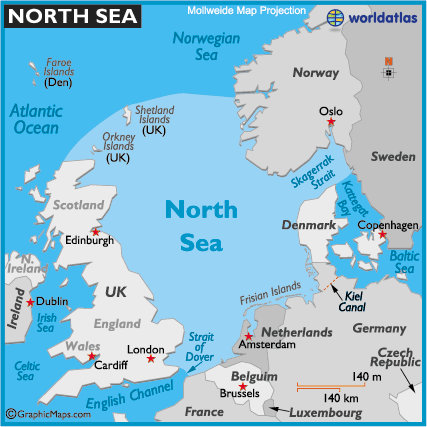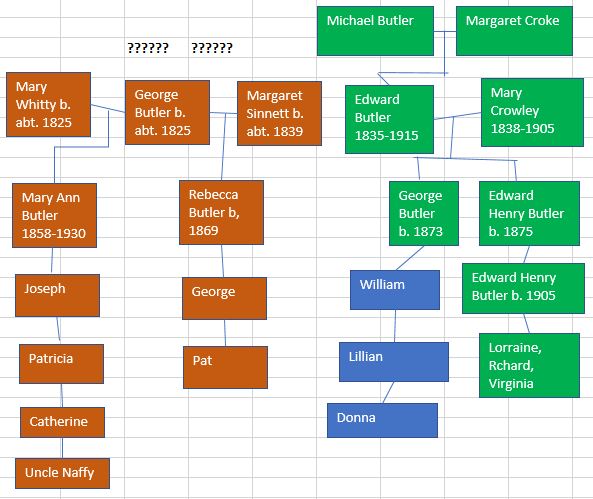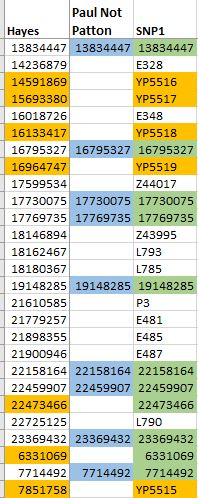I have written quite a bit on Frazer BigY testing. To see my Blogs on the subject, they should be categorized under Frazer YDNA. Paul and Jonathan have both tested for the BigY. BigY finds all the SNPs of the YDNA of a male. These SNPs are both known and previously unknown SNP. These SNPs change roughly every 100 years. There are terminal SNPs, private SNPs and public SNPs, so it gets a bit confusing.
Frazer of North Roscommon, Ireland Terminal SNP
First, I forgot to mention what YFull is. YFull analyzes the Family Tree DNA (FTDNA) BigY test. For Haplogroups like R1a, which is what the Frazers are, they are good at analyzing the information and coming up with new SNPs. Sometimes, they are more up to date than FTDNA which seems ironic as it is FTDNA that did the test to begin with. For example, YFull has my cousin Paul as R-YP5515. FTDNA has Paul’s terminal SNP as R-YP432 which is older. This is how I have drawn it in previous Blogs:
The bottom line is that Frazer and Grant and perhaps Patton are all R-YP5515, but FTDNA doesn’t show it yet. YP5515 is in a box with many other SNPs, but YP5515 is the representative SNP for the group. That means that a bunch of SNPs are in that block, but we don’t know which one was formed first. At any rate, it is a point at which branching occurs. That is one good thing about SNPs. As they are unambiguous, they are good at forming SNP trees, which as basically ancient family (or clan) trees.
FTDNA’s Haplotree Vs YFull’s YTree
Here is how Frazer shows up on FTDNA’s Haplotree:
FTDNA only shows YP431 branching off, but not YP5515.
Here is YFull’s YTree:
In the tree above, Paul is indicated with a red “new”. The YTree tells me a lot more than the FTDNA Haplotree:
- The R-YP5515 branch beneath R-YP432 is a lot smaller presently than the R-YP431 branch.
- FTDNA is missing a lot of SNPs under the YP431 branch
- The R-YP431 branch has a lot of people that appear to have Norwegian ancestors. From my previous Blogs, I have shown that the YP5515 branch appears to be from Scotland.
- YFull is popular for it’s dating. YP431 shows a common ancestor at 1900 years before present. I assume that once Jonathan’s results are submitted to YFull, there will be new SNPs named and a new date for YP5515.
YFull’s Look At Private SNPs
Here we get into terminology. YFull calls these Novel SNPs, but when I choose them, they are listed as Private. A simplified explanation is that a Novel SNP is an unnamed one and a Private one is one that is not shared with anyone else (at YFull). YFull gives novel SNPs a YFS number. Here is the list of Paul’s best quality Novel SNPs:
This shows that Paul has 42 Novel SNPs. What I don’t show is that there were 16 ambiguous SNPs. The other categories beyond ambiguous had no Novel SNPs. Those categories are Low Quality, One Reading and INDELs.
I can download the Novel SNPs to an Excel Sheet. Here are Paul’s SNPs that are not shared with Jonathan:
This shows that Paul has 4 Novel SNPs, what FTDNA calls Variants. In my tree above, I had that Paul had 5. When I checked Variant 28804880, I see that was a mistake, so I’ll take that one out.
This is a better result as now there is symmetry between the Archibald Line and the James Line. This shows exactly 4 new novel variants on the Archibald Line and the James Line since their common ancestor. 150 years is an average period for new SNPs, so that could mean 600 years to the common ancestor if these are all actually new SNPs. This could mean that the Frazer had more variants than average or that this R1a branch of YP5515 has more than average. The actual time to the common ancestor is about 260 years if we have done the genealogy correctly.
FTDNA VS YFull
YFull exists because FTDNA is not the best at analyzing its own BigY results. However, FTDNA has a few features that YFull does not have. With FTDNA, one can tell who the matches are. In YFull the matches are just by ID. With FTDNA, I can match by Variants which is useful. At Yfull I can only find matches by known SNPs.
Number of Novel variants
As above, YFull shows 42 Novel SNPs for Paul. This is close to what FTDNA shows. FTDNA shows that Paul shares 36 Novel Variants with Jonathan and that he has 4 unique Variants. That adds up to 40. That would give the impression that YFull is showing 2 more Novel Variants compared to FTDNA. But that is not the case. Actually, there is very little agreement at all.
This is the top of my spreadsheet that compares the Variants. Y5515 is in gold. YFull does not report any of the Variants in the YP5515 block or above. FTDNA does as it is out to date with its Variants. That is why there are so many blanks in the Paul YFull column. That is a difference of 21 SNPs to begin with. Going down the spreadsheet, the Variants that are listed as being the same in both FTDNA and YFull are shown in the Paul YFull column:
This shows that there are only 17 Variants out of 40-42 reported that are the same in both FTDNA and YFull. Below this are 25 Variants that YFull lists that FTDNA does not list. This is perhaps because FTDNA lists only the highest quality Variants. The 25 Variants that YFull lists includes Acceptable and Ambiguous Quality SNPs.
Next Steps
I have recently heard from Martin who is the L664 Administrator. He is back from a trip to Australia and working on getting these SNPs into a new tree. Hopefully Jonathan’s results will make their way to YFull also for analysis and help build out the YTree.


































































































